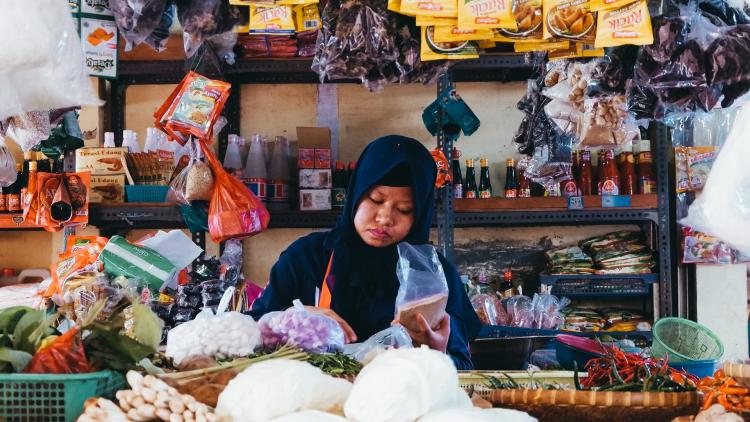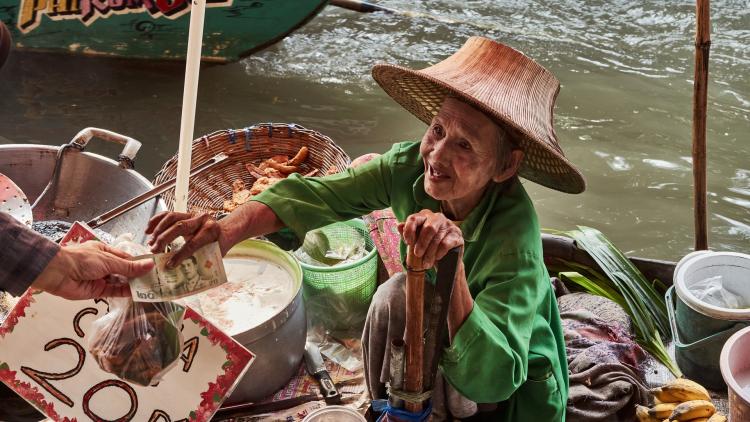What is the current state of capitalism? Insights from SOAS academics


In the aftermath of the 2007-09 Global Financial Crisis, the world entered a period of transition, prompting crucial questions about the trajectory of global capitalism. Matteo Giordano from the EReNSEP collective highlights some of the key economic analyses of SOAS scholars.
What is the ‘State of Capitalism’? The title of our book asks (and answers) the very same question. The state of capitalism is in a period of interregnum that started with the Global Financial Crisis of 2007-09 and has not ended yet. Global capitalism is striving—unsuccessfully—to find a way forward to escape economic and social exhaustion, while its temporary survival has been contingent on exceptional support by the state.
The current capitalist system is stagnating
This is the interregnum, and it leaves us facing ‘morbid symptoms’ both at home - the rise of the Right - and abroad - the threat of war. The social fibre of the capitalist interregnum is precarious, for the system has lost its bearing and is stagnating. The pandemic reminded us of the fundamental and powerful role of the state in the capitalist economy, both in stopping and restarting economic activity. How do states acquire such an important, defining position?
The pandemic turmoil just hastened the unravelling of financialised capitalism, which started in 2007.
The context is simple. On the one hand, since the global financial crisis, the modern financialised capitalist system has been in an interregnum – “the old is dying and the new cannot be born” (Gramsci 1930, Prison Notebooks). On the other, core and periphery appear clearly and in new forms in the world economy, generating hegemonic struggles.
What are the features of the modern state of capitalism?
The measures undertaken by states to counter the significant contractions following the pandemic restrictions allowed for neoliberal capitalism to survive, though in a precarious shape. Such a condition was not a result of the pandemic itself but of the weakness of capitalist accumulation and the spread of financialisation over the last several decades. The pandemic turmoil has just hastened the unravelling of financialised capitalism, which started in 2007.
What are the features of this interregnum? First, a weak core; second, internationalised productive capital; and third, internationalised finance:
- A weak core: The weakness of accumulation in core countries [such as the US, UK, France, Germany, and Japan] is evident in the low rates of growth and of investments, struggling productivity growth, and downward pressures on wages.
- Internationalised productive capital: The expansion and domination of large multinational corporations over the global value chains underpins the internationalisation of productive capital, which is mediated by foreign direct investment and the cross-border flows of loanable capital.
- Internationalised finance: The internationalisation of finance, lastly, arises from commercial banks and non-banks financial institutions (so-called “shadow banks”) operating globally, both sustaining productive processes via credit provision and engaging in speculative behaviours in core as well as peripheral markets.
Hegemonic struggle over money
What characterises the hegemonic struggle? Control over money. If, at the domestic level, control over fiat money via the central bank underpins the role of the state in the world economy, it is the control over world money that defines the imperial power of a country. Clearly, the USA has been a hegemonic power precisely due to the institutionalised and non-institutionalised control over the dollar managed by the Federal Reserve.
Since the global financial crisis... new powers have come forth with potential challenges to the current distribution of power.
Since the global financial crisis and especially with the military struggles (in which the dollar is weaponised, as for example the freezing of dollar foreign exchange reserves of the Afghani government in 2020) characterising the last decade, new powers have come forth with potential challenges to the current distribution of power.
The state of capitalism and the SOAS curriculum
The book The State of Capitalism: Economy, Society and Hegemony brings out a multi-layered study of contemporary capitalism in light of the trends and shocks of the past half century, building on the contributions of scholars gravitating around SOAS (and the EReNSEP) and the heterodox approach to economics characteristic of SOAS.
In fact, not only did the book launch bring seminal scholars and policymakers to SOAS, but the theoretical and empirical contributions included in the book are included in the rigorous programmes taught to our postgraduate (and undergraduate, in a more simplified version) students. It is not a coincidence that various flavours of theories of financialisation come from scholars who have spent time or currently are at SOAS and that the lens of the book highlights economic analysis as an exercise applied to the world economy and not simply to national systems in a vacuum.
Header image credit: Abel Pérez via Unsplash.
About the author
Matteo Giordano is an economist and political economist currently pursuing a PhD in the Department of Economics at SOAS University of London.



